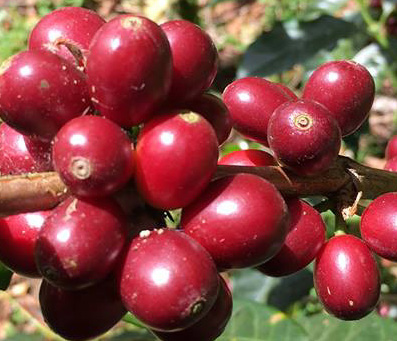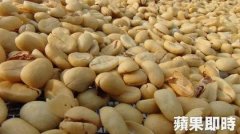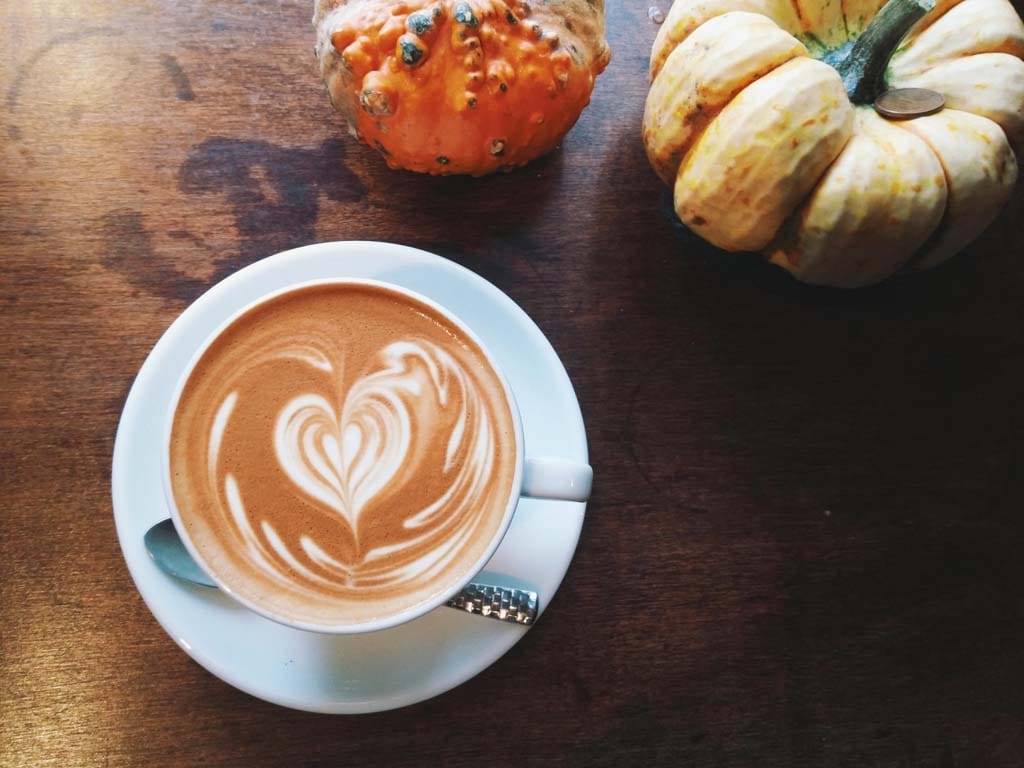Composition analysis of coffee beans, details of food safety label

Professional barista communication, please pay attention to coffee workshop (Weixin Official Accounts cafe_style)
Green beans (percentage)
Water content: 11.3
Fat: 11.7
Protein: 11.8
Sugar: 8.0
The best part: 17.1
Caffeine: 1.3
Tannin: 6.0
Minerals: 4.2
Crude fiber: 28.6
cooked beans
Moisture: 2.5
Fat: 13.2
Protein: 12.8
Sugar: 1.8
Essential: 29.6
Caffeine: 1.3
Tannin: 4.0
Minerals: 5.2
Crude fiber: 29.6
component analysis
Caffeine: Caffeine is the most noticeable of all coffee ingredients. Its effect is extremely extensive, will affect the human body's brain, heart, blood vessels, gastrointestinal, muscle, kidney and other parts. Moderate caffeine will stimulate the cerebral cortex, promote sensory, judgment, memory, emotional activities, so that myocardial function becomes more active, vasodilation blood circulation enhanced, and improve metabolic function. Caffeine can also reduce muscle fatigue and promote digestive secretion. In addition, because it also promotes kidney function and helps the body to expel excess sodium ions from the body, caffeine does not accumulate in the body like other narcotic and excitatory substances, and will be excreted in about two hours.
Tannin: After extraction, tannins will turn into a pale yellow powder, which is easy to dissolve into water. Once boiled, it will decompose to produce pyrochloric acid, which will make coffee taste worse.
Fat: The fat contained in coffee plays a very important role in the smell of coffee. After analysis, it was found that coffee contains many kinds of fat, and the most important of them are acidic fat and volatile fat. Acidic fat means fat contains acid, its strength will vary according to the type of coffee, volatile fat is the main source of coffee aroma, it will emit forty aromatic substances, very complex and subtle things.
Sugar: Green coffee beans contain about 8 percent sugar, most of which will be converted into caramel after roasting, giving coffee a unique brown color.
Extract essence: can be divided into several kinds, accounting for nearly one-third of baked beans, light so far still do not know what effect is caused by the substance.
Minerals: lime, iron, sulfur, phosphonium, sodium carbonate, chlorine, etc., but because the proportion is not high, so the impact on the flavor of coffee is not large, combined with only a little astringency.
Coarse fiber: The fiber of raw beans will be carbonized after baking. This caramelization of carbon and sugar combines to form the hue of coffee, but the powdered fiber can have a considerable impact on coffee flavor.
Composition of Coffee
ingredients
features
Affects coffee flavor
caffeine
1. A plant xanthine and theobromine, identical to theobromine.
2. Stimulate cerebral cortex and vasodilation.
3. Promotes kidney function, diuresis.
4. Stimulate stomach peristalsis, stomach disorders should not drink too much.
Taste: bitter
tannic acid
1. Light yellow powder.
2. Boiling produces pyroacetic acid.
sour, sweet
fatty
1. Coffee contains a lot of fat.
2. There are mainly acidic fats and volatile fats.
Acid fat--sour
Volatile fat--aroma
protein
1. The source of the caroli, it's not filtered out.
2. It chars when baked.
Coffee liquid dark brown, aroma
Carbonization presents bitter taste
sugar
1. It turns into caramel when baked.
2. Caramel combines with tannins to form a slightly bitter sweet taste.
Coffee liquid dark brown, aroma
bitter taste after caramelization
extract essence
1. Coffee is called coffee.
2. So far it has not been known what kind of material it is formed from.
Taste: Rich and mellow
minerals
1. Very low percentage of coffee.
2. The quality and flavor of coffee are less affected.
Taste: astringent
crude fiber
1. It chars when baked.
2. Carbonization and caramelization combine to form coffee tones.
Coffee liquid dark brown, bitter
Main raw materials:
coffee
There's coffee in the coffee jar, of course, but coffee.
Coffee let's just say coffee, plant name, Rubiaceae,
Born in tropical areas, evergreen shrubs,
More than twenty feet high, leaves for the oval,
White flowers and fruits can be baked and ground into a powder that can be used as a drink.
Coffee grown according to different regions and different cultural customs
There are different kinds of coffee drinking methods
One by one, they appeared before people's eyes.
Caffeine is one of the most characteristic components of coffee, with excitability, diuresis and digestion
Detoxification effect…100g of coffee beans contain about 1.3 g of caffeine…
Caffeine in a 250ml can of coffee exceeds 200PPM of secondary ingredients.
water
Water is a colorless transparent liquid necessary for life
The companies that make these coffee drinks
There are factories in places with good water quality
So you can all drink it in peace.
sugar
Brown sugar is a fine white lump of sugar with a loose texture. Sugar:
Coffee contains only a small amount of sugar, but once roasted, it becomes lactose and forms
Coffee's characteristic brown color...
The fiber component, when baked, will carbonize, and the sugar, when it melts...
It forms the characteristic color of coffee...
fatty acid sucrose ester
Fatty acids are combinations of CH+1COOH and alkane
Sucrose fat…is sucrose fat…know people write it!
100g of fresh coffee beans contain about 6g of tannic acid, which is why coffee drinks
The cause of bitterness…but the bitterness is inversely proportional to the baking degree…
emulsion stabilizer
Emulsification is when two things mix together without melting or settling...
Of course! How can the coffee in the coffee can be emulsified!!
So add an emulsion stabilizer to keep him perfectly blended.
sodium Citrate
It's an organic compound.
It's a colorless crystal.
With a refreshing smell
Fruits such as oranges and oranges all have this taste.
nutrients
amount of content
The average coffee pot has a capacity of 375ml. 310ml. 300ml. 250ml and several other different specifications
And there's a 50% bonus... That's... That's not counting.
heat
Usually a 250ml can of coffee contains 100 calories.
fatty
Fat... is animal oil.
That's kind of gross to say...
Don't be afraid to drink coffee.
A can of 250 usually contains 1.6 grams of fat, which comes from milk.
It plays an important role in enhancing coffee flavor...
a carbohydrate
Carbon is also an important component of the human body.
A 250ml can of coffee contains 20 grams of carbohydrates.
protein
A complex compound formed by the polymerization of amino acids is an important component of the human body. 4. Protein:
Coffee after boiling contains almost no protein. But even if the amount is small, the protein breaks down.
It can also enhance coffee flavor...
A 250ml can of coffee contains 3.4 grams of protein.
calcium
It's a pretty active substance, chemically speaking.
From a health point of view... Calcium is a great help to the human body.
It prevents osteoporosis.
A 250ml can of coffee contains 83 mg of calcium.
Important Notice :
前街咖啡 FrontStreet Coffee has moved to new addredd:
FrontStreet Coffee Address: 315,Donghua East Road,GuangZhou
Tel:020 38364473
- Prev

What do you need to pay attention to when purchasing coffee and raw beans? How to judge the quality of raw beans?
Communication of professional baristas Please follow the coffee workshop (Wechat official account cafe_style) Coffee bean sellers are mainly responsible for grading coffee beans before selling them to coffee bean merchants. After the grading is completed, premium coffee beans and boutique coffee beans will be selected, although they will have some defects but do not affect the coffee rating. These defects are not so serious, but they may also affect the quality of coffee.
- Next

Even the Japanese don't know! Mixed beans? American? O'Lei? Latte? Great Analysis of Coffee varieties
For professional baristas, please follow the coffee workshop (Wechat official account cafe_style) in menu, a coffee shop in Japan, there are many options for coffee lovers. But also because there are too many kinds, and there is no explanation, and I am embarrassed to ask the shop owner, so even the Japanese themselves are not quite clear. Except for the simple espresso (no milk, no water)
Related
- Beginners will see the "Coffee pull flower" guide!
- What is the difference between ice blog purified milk and ordinary milk coffee?
- Why is the Philippines the largest producer of crops in Liberia?
- For coffee extraction, should the fine powder be retained?
- How does extracted espresso fill pressed powder? How much strength does it take to press the powder?
- How to make jasmine cold extract coffee? Is the jasmine + latte good?
- Will this little toy really make the coffee taste better? How does Lily Drip affect coffee extraction?
- Will the action of slapping the filter cup also affect coffee extraction?
- What's the difference between powder-to-water ratio and powder-to-liquid ratio?
- What is the Ethiopian local species? What does it have to do with Heirloom native species?

